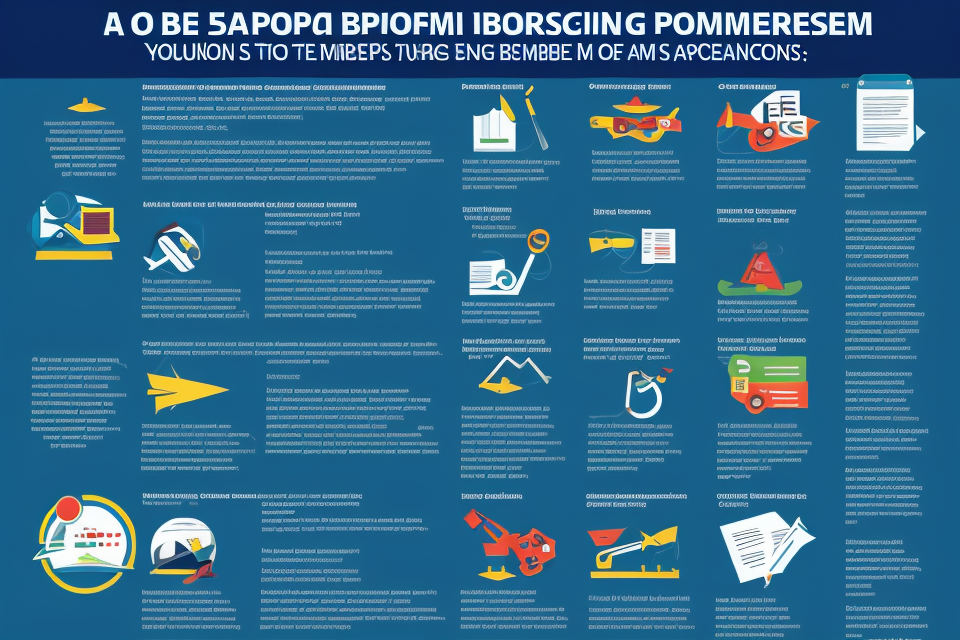
If you’re a golf enthusiast with a passion for the game and a desire to turn your love for golf into a career, becoming PGA certified is a great way to take your skills to the next level. As a PGA certified professional, you’ll have access to a wealth of opportunities, including teaching, coaching, and working in golf course management. But what does it take to become PGA certified? In this article, we’ll explore the steps you need to take to earn your PGA certification and start a rewarding career in the golf industry. So, let’s get started!
To become PGA certified, you must first pass the PGA Certification Program’s three-part examination, which includes a written exam, a player level assessment, and a teaching demonstration. The written exam covers a wide range of golf-related topics, including the rules of golf, golf course management, and teaching methods. The player level assessment evaluates your own golf skills, while the teaching demonstration allows you to showcase your ability to teach golf to others. Additionally, you must also meet certain educational and professional experience requirements to be eligible for the PGA Certification Program. Once you have successfully completed all of the steps and requirements, you will be awarded your PGA certification.
Understanding PGA Certification
What is PGA certification?
PGA certification is a professional designation that is awarded to individuals who have demonstrated a high level of knowledge and expertise in the field of golf management. This certification is offered by the Professional Golfers’ Association (PGA) of America, which is the largest working sports organization in the world.
The PGA certification process is designed to assess an individual’s competence in various aspects of golf management, including golf operations, player development, and business management. The certification is divided into several levels, each of which requires a different level of experience and education.
To become PGA certified, an individual must first meet the eligibility requirements, which include having a minimum of two years of experience in the golf industry and completing a PGA approved education program. Once an individual meets the eligibility requirements, they can apply for the certification exam, which is a rigorous test of their knowledge and skills in the field of golf management.
In summary, PGA certification is a highly respected professional designation that is awarded to individuals who have demonstrated a high level of knowledge and expertise in the field of golf management. It is a valuable credential for those who are seeking to advance their careers in the golf industry and is recognized by employers and peers alike.
Benefits of PGA certification
PGA certification is a highly respected credential in the golf industry, and obtaining it can offer numerous benefits to those looking to advance their careers in this field. Some of the key benefits of PGA certification include:
- Enhanced career opportunities: With PGA certification, individuals can demonstrate their expertise and knowledge in the golf industry, which can help them stand out in a competitive job market. This can lead to better job opportunities, higher salaries, and greater career advancement potential.
- Recognition as a professional in the golf industry: PGA certification is widely recognized and respected within the golf industry, and it can help individuals establish themselves as professionals in their field. This can help them build credibility and trust with clients, employers, and peers, which can be essential for success in this industry.
- Access to exclusive resources and networks: PGA certification provides individuals with access to a range of exclusive resources and networks, including training programs, mentorship opportunities, and industry events. This can help them build valuable connections and gain access to valuable resources that can help them succeed in their careers.
Meeting the Eligibility Requirements
To become PGA certified, an individual must meet certain eligibility requirements, including having a minimum of two years of experience in the golf industry and completing a PGA approved education program. Once an individual meets the eligibility requirements, they can apply for the certification exam, which is a rigorous test of their knowledge and skills in the field of golf management. Passing the certification exam is a crucial step in becoming PGA certified and demonstrates a candidate’s mastery of the knowledge and skills required to succeed as a PGA professional. Additionally, to maintain PGA certification, professionals must complete continuing education requirements and renew their certification before it expires. Failure to comply with the PGA’s standards and requirements for certification can result in severe consequences for a professional golfer.
Education and experience requirements
In order to become PGA certified, an individual must meet certain education and experience requirements. These requirements are put in place to ensure that only qualified professionals become certified, and to ensure that the PGA’s standards of excellence are upheld.
Minimum education level required
To become PGA certified, an individual must have a minimum of a bachelor’s degree from an accredited institution. This degree can be in any field, but it must be from an institution that is recognized by the PGA. In some cases, individuals with significant work experience in the golf industry may be able to substitute their experience for the bachelor’s degree requirement.
Relevant work experience required
In addition to the minimum education level, PGA certification also requires individuals to have relevant work experience in the golf industry. The amount of experience required varies depending on the specific certification being pursued, but in general, individuals must have at least two years of experience working in the golf industry. This experience can include working as a golf instructor, golf professional, or in a related field such as golf course management.
It is important to note that the work experience requirement is not necessarily a strict two years of experience, but rather a demonstration of competency and skill in the golf industry. Individuals who have completed internships or apprenticeships in the golf industry may also be able to count this experience towards the two-year requirement.
Overall, meeting the education and experience requirements is a crucial step in becoming PGA certified. These requirements ensure that only qualified professionals become certified, and that the PGA’s standards of excellence are upheld.
PGA membership requirements
Becoming a PGA certified professional requires meeting certain eligibility requirements, including becoming a member of the PGA. There are several types of PGA membership, each with its own set of requirements.
Types of PGA membership
The PGA offers several types of membership, including:
- PGA Member: Individuals who have completed the PGA’s three-year training program and have been approved by the PGA’s membership committee.
- PGA Apprentice: Individuals who are currently enrolled in the PGA’s three-year training program and are working under the supervision of a PGA Member.
- PGA Affiliate: Individuals who have completed a PGA-approved course in golf management or golf coaching and have at least two years of industry experience.
Requirements for each type of membership
The requirements for each type of PGA membership are as follows:
PGA Member
To become a PGA Member, individuals must:
- Complete the PGA’s three-year training program, which includes completing a series of modules and passing a final assessment.
- Have at least three years of industry experience.
- Pass a final assessment, which includes a practical demonstration of teaching and coaching skills, as well as a written exam.
PGA Apprentice
To become a PGA Apprentice, individuals must:
- Be enrolled in the PGA’s three-year training program and be working under the supervision of a PGA Member.
- Complete a series of modules and pass regular assessments.
- Complete a minimum of 200 hours of practical experience working with clients.
PGA Affiliate
To become a PGA Affiliate, individuals must:
- Complete a PGA-approved course in golf management or golf coaching.
- Have at least two years of industry experience.
- Pass a written exam and complete a practical demonstration of teaching and coaching skills.
Meeting these eligibility requirements is the first step in becoming PGA certified. The next step is to complete the PGA’s certification process, which includes passing a final assessment and completing a minimum of three years of industry experience.
Completing the Application Process
Application requirements
Becoming a PGA certified professional requires a comprehensive application process that includes several key requirements. The following is a detailed breakdown of the application requirements:
Submission of application fee
One of the initial requirements for becoming PGA certified is the submission of an application fee. This fee serves as a processing fee for your application and is non-refundable. The fee amount is subject to change, so it’s essential to check the current fee when submitting your application.
Completion of required forms and documentation
In addition to the application fee, applicants must also complete various forms and provide necessary documentation to support their application. These forms and documents include:
- Personal information form: This form requires applicants to provide personal information such as name, address, and contact details.
- Experience form: This form requires applicants to detail their work experience in the golf industry, including positions held, responsibilities, and achievements.
- Education form: This form requires applicants to provide information about their education, including any relevant courses, certifications, or degrees.
- Reference forms: Applicants must provide two professional references who can speak to their experience and qualifications in the golf industry.
- Criminal background check: A criminal background check is required to ensure that applicants have no prior convictions that may disqualify them from becoming PGA certified.
It’s important to note that all forms and documentation must be completed accurately and in full to avoid any delays or issues with the application process.
Application review process
- Review of eligibility requirements: The first step in the application review process is to ensure that the applicant meets the minimum eligibility requirements set by the PGA. These requirements include having a minimum of two years of experience as a golf professional, as well as a valid PGA membership.
- Evaluation of experience and education: Once the applicant has been deemed eligible, the PGA will evaluate their experience and education in the golf industry. This includes reviewing the applicant’s work history, education, and any relevant certifications or training.
- Background check: As part of the application review process, the PGA may also conduct a background check on the applicant. This check may include a review of the applicant’s criminal history, as well as any other relevant information that could impact their ability to become certified.
It is important to note that the application review process is a critical step in becoming PGA certified, as it ensures that the applicant has the necessary qualifications and experience to succeed in the golf industry. By carefully evaluating each applicant’s background and experience, the PGA can ensure that only the most qualified individuals are granted certification.
Passing the Certification Exam
Exam format and structure
The certification exam is a crucial step in becoming PGA certified. The exam format and structure are designed to test a candidate’s knowledge and understanding of the game of golf and the principles of the PGA.
The exam is a multiple-choice test that consists of 100 questions, which are divided into six content areas. These content areas include:
- Rules and Competition: This section covers the rules of golf, tournament procedures, and competition policies.
- Golf Swing and Ball Flight: This section covers the principles of the golf swing, ball flight, and shotmaking techniques.
- Golf Course Management: This section covers course management, strategies for playing different holes, and shot selection.
- Physical and Mental Skills: This section covers the physical and mental skills required to play golf, including fitness, flexibility, and mental toughness.
- Equipment and Facilities: This section covers the different types of golf equipment, club maintenance, and golf facility operations.
- Teaching and Coaching: This section covers teaching methods, coaching techniques, and player development programs.
Each question on the exam is designed to test a candidate’s knowledge and understanding of a specific aspect of the game of golf or the PGA. The questions are designed to be challenging, but not impossible, and are based on real-world scenarios that a PGA professional might encounter on the job.
The exam is administered by the PGA of America and is offered at various locations throughout the country. To be eligible to take the exam, a candidate must have completed the PGA’s required education and training program, which includes coursework in golf management, golf instruction, and business management.
Overall, passing the certification exam is a critical step in becoming PGA certified and demonstrates a candidate’s mastery of the knowledge and skills required to succeed as a PGA professional.
Preparing for the exam
Preparing for the PGA certification exam is crucial to ensure success. There are several study materials and resources available to help you prepare for the exam. It is important to start preparing early and create a study plan that works for you. Here are some tips for exam preparation:
Study Materials and Resources
The PGA of America provides official study materials for the certification exam. These materials include:
- The PGA Certified Professional Study Guide: This comprehensive guide covers all the topics that are likely to be included on the exam. It includes detailed explanations, examples, and practice questions.
- PGA Learning Center: The PGA Learning Center offers online courses and interactive tools to help you prepare for the exam. It includes video lessons, practice quizzes, and interactive simulations.
- Practice Exams: The PGA of America offers practice exams that simulate the actual exam experience. These exams can help you identify areas where you need to focus your studying.
Tips for Exam Preparation
- Start Early: It is important to start preparing for the exam early. This will give you enough time to review all the material and practice with various study tools.
- Create a Study Plan: Create a study plan that works for you. Set specific goals and deadlines for each section of the exam. Allocate time each day or week to study and practice.
- Focus on Weaknesses: Identify your strengths and weaknesses early on. Focus your studying on the areas where you need the most improvement.
- Practice Under Time Pressure: The certification exam is timed. It is important to practice answering questions under time pressure to simulate the actual exam experience.
- Seek Help: If you are struggling with a particular topic or concept, seek help from a tutor or mentor. They can provide additional guidance and support to help you succeed.
Maintaining PGA Certification
Continuing education requirements
In order to maintain PGA certification, golf professionals must meet continuing education requirements. These requirements are put in place to ensure that PGA professionals stay up-to-date with the latest developments in the field and are able to provide the highest level of service to their clients.
Required number of continuing education credits
The required number of continuing education credits for PGA professionals varies depending on their level of certification. For example, PGA members are required to earn a minimum of 10 continuing education credits per year, while PGA apprentices are required to earn a minimum of 5 continuing education credits per year.
Types of activities that qualify for continuing education credits
There are a variety of activities that qualify for continuing education credits, including:
- Attending seminars and workshops
- Participating in webinars and online courses
- Reading industry publications and books
- Completing industry-related college courses
- Conducting research and presenting findings
- Participating in mentorship programs
- Volunteering at industry events or organizations
It is important for PGA professionals to carefully track their continuing education activities and maintain records of their completion in case they are ever audited by the PGA. By meeting these continuing education requirements, PGA professionals can maintain their certification and continue to provide the highest level of service to their clients.
Renewal process
To maintain PGA certification, the following steps must be completed:
- Submission of renewal application and fee: PGA professionals must submit a renewal application and fee before their certification expires. The application can be found on the PGA of America’s website and must be submitted by the deadline specified in the certification renewal notice.
- Completion of continuing education requirements: To renew their certification, PGA professionals must complete continuing education requirements. The specific requirements may vary depending on the certification level and specialization. For example, a PGA professional who specializes in teaching may need to complete courses in teaching methodology, while a PGA professional who specializes in tournament management may need to complete courses in event planning and logistics.
- Update of contact information and other relevant details: PGA professionals must update their contact information and other relevant details when renewing their certification. This includes updating their email address, phone number, and employment status. Any changes to their certification status, such as a change in their specialization or certification level, must also be reported.
It is important for PGA professionals to complete these steps to maintain their certification and continue to use the PGA designation. Failure to renew their certification may result in the revocation of their PGA membership and the inability to use the PGA designation.
Consequences of non-compliance
Failure to comply with the PGA’s standards and requirements for certification can result in severe consequences for a professional golfer. The following are some of the consequences of non-compliance:
- Suspension or revocation of certification: If a golfer fails to meet the PGA’s standards or requirements for certification, their certification may be suspended or revoked. This means that they will no longer be able to use the PGA’s certification marks or claim to be PGA certified.
- Reinstatement process: If a golfer’s certification is suspended or revoked, they may be able to reinstate their certification by meeting the PGA’s requirements for reinstatement. This process may include completing additional education or training, paying a reinstatement fee, and demonstrating that they are in compliance with the PGA’s standards and requirements.
It is important for professional golfers to understand the consequences of non-compliance and to take steps to maintain their certification. Failure to do so can have a significant impact on their career and reputation as a golfer.
Frequently asked questions
- Common questions and concerns about PGA certification
- What is the renewal process for PGA certification?
- How often do PGA professionals need to complete continuing education courses?
- Are there any restrictions on the types of courses that can be taken for credit?
- Can PGA professionals earn credit for teaching or coaching experience?
- What happens if a PGA professional fails to renew their certification?
- Contact information for further assistance
- PGA of America: (phone number) or (email address)
- PGA Tour: (phone number) or (email address)
- Local PGA Section: (phone number) or (email address)
FAQs
1. What is PGA certification?
PGA certification, or Professional Golf Association certification, is a professional credential awarded to individuals who have completed a comprehensive training program and have demonstrated proficiency in teaching, coaching, and playing golf. PGA certification is recognized worldwide and is considered the gold standard in golf instruction.
2. What are the benefits of PGA certification?
PGA certification offers a number of benefits, including increased job opportunities, higher earning potential, access to exclusive resources and training, and the ability to demonstrate expertise in the field of golf instruction. PGA certified professionals are also eligible to compete in PGA tournaments and events.
3. What are the requirements for PGA certification?
To become PGA certified, individuals must meet certain requirements, including a minimum of five years of professional experience in the golf industry, completion of a PGA certification program, and passing a series of exams and evaluations. Candidates must also demonstrate proficiency in teaching, coaching, and playing golf.
4. How do I enroll in a PGA certification program?
To enroll in a PGA certification program, individuals must first meet the eligibility requirements, which include having a minimum of five years of professional experience in the golf industry. Candidates can then apply to a PGA certification program through the PGA of America website or through a PGA-approved program provider.
5. How long does it take to become PGA certified?
The length of time it takes to become PGA certified varies depending on the individual’s experience and the PGA certification program they choose. On average, it takes approximately two years to complete a PGA certification program and become fully certified.
6. What kind of training is included in a PGA certification program?
PGA certification programs include a comprehensive training program that covers a range of topics, including teaching techniques, swing analysis, player development, and golf course management. Candidates will also have the opportunity to gain practical experience through internships and apprenticeships.
7. What kind of exams do I need to pass to become PGA certified?
To become PGA certified, candidates must pass a series of exams and evaluations, including a written exam, a playing ability test, and a final evaluation. These exams assess a candidate’s knowledge and skills in teaching, coaching, and playing golf.
8. How much does PGA certification cost?
The cost of PGA certification varies depending on the program and provider, but on average, it can cost between $5,000 to $10,000. This includes tuition, fees, and other expenses associated with the program.
9. What kind of jobs can I get with PGA certification?
PGA certification qualifies individuals for a wide range of jobs in the golf industry, including golf instructors, golf coaches, golf directors, and golf course managers. PGA certified professionals can work at golf courses, country clubs, resorts, and other golf-related facilities.
10. Can I become PGA certified if I don’t speak English?
PGA certification requires candidates to pass a written exam and a final evaluation, which may be in English. However, PGA offers accommodations for candidates who do not speak English as their first language, including translation services and additional time to complete the exams.


